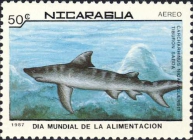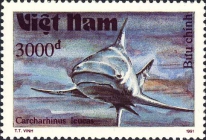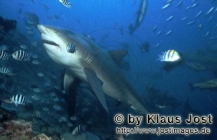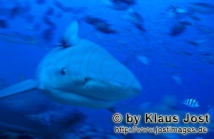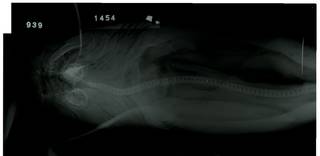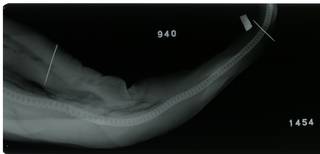WoRMS taxon details
Carcharhinus leucas (Müller & Henle, 1839)
105792 (urn:lsid:marinespecies.org:taxname:105792)
accepted
Species
Carcharhinus azureus (Gilbert & Starks, 1904) · unaccepted
Carcharhinus nicaraguensis (Gill, 1877) · unaccepted
Carcharhinus vanrooyeni Smith, 1958 · unaccepted
Carcharhinus zambezensis (Peters, 1852) · unaccepted
Carcharias azureus Gilbert & Starks, 1904 · unaccepted
Carcharias leucas Valenciennes, 1839 · unaccepted
Carcharias spenceri Ogilby, 1910 · unaccepted
Carcharias zambesensis Peters, 1852 · unaccepted (misspelling)
Carcharias zambezensis Peters, 1852 · unaccepted
Carcharicus leucas (Valenciennes, 1839) · unaccepted > misspelling - incorrect subsequent spelling
Carcharinus leucas (Valenciennes, 1839) · unaccepted (misspelling)
Carcharinus zambesensis (Peters, 1852) · unaccepted (misspelling)
Carcharinus zambezensis (Peters, 1852) · unaccepted (misspelling)
Eulamia nicaraguensis Gill, 1877 · unaccepted
Galeolamna bogimba Whitley, 1943 · unaccepted
Galeolamna greyi mckaili Whitley, 1945 · unaccepted
Galeolamna leucas (Valenciennes, 1839) · unaccepted (synonym)
Galeolamna mckaili Whitley, 1945 · unaccepted
Prionodon platyodon Poey, 1860 · unaccepted
Squalus obtusus Poey, 1861 · unaccepted
Squalus platyodon (Poey, 1860) · unaccepted
marine, brackish, fresh, terrestrial
Not documented
Description Euryhaline, found in coastal waters including bays, estuaries, and rivers. Occasionally found in the surf zone (Ref. 9710)....
Description Euryhaline, found in coastal waters including bays, estuaries, and rivers. Occasionally found in the surf zone (Ref. 9710). Feeds on small sharks, rays, and sea urchins. Viviparous, with a yolk-sac placenta, 1 to 13 young per litter. Very hardy and lives well in captivity. The most dangerous species of tropical shark. Has repeatedly been implicated in attacks on humans (Ref. 4967). Utilized for human consumption, fins for soup, hides for leather, and liver for oil. Sympatric with @C. amboinensis, G. gangeticus@. [details]
Froese, R. and D. Pauly. Editors. (2024). FishBase. Carcharhinus leucas (Müller & Henle, 1839). Accessed through: World Register of Marine Species at: https://www.marinespecies.org/aphia.php?p=taxdetails&id=105792 on 2024-04-24
Date
action
by
![]() The webpage text is licensed under a Creative Commons Attribution-Noncommercial 4.0 License
The webpage text is licensed under a Creative Commons Attribution-Noncommercial 4.0 License
context source (Deepsea)
Intergovernmental Oceanographic Commission (IOC) of UNESCO. The Ocean Biogeographic Information System (OBIS), available online at http://www.iobis.org/ [details]
context source (HKRMS) Sin, Y. T. (2009). Age, growth and reproductive biology of whitespotted bamboo shark (Chiloscyllium plagiosum) from Hong Kong and adjacent waters. Mphil thesis. The University of Hong Kong. [details]
context source (RAS) Australian Antarctic Data Centre. , available online at https://data.aad.gov.au/aadc/biodiversity/ [details]
context source (PeRMS) Chirichigno, N.; Cornejo, M. (2001). Catálogo comentado de los peces marinos del Perú. <em>2ª ed. Instituto del Mar de Perú. Publicación Especial. Callao.</em> 314 p. [details]
basis of record van der Land, J.; Costello, M.J.; Zavodnik, D.; Santos, R.S.; Porteiro, F.M.; Bailly, N.; Eschmeyer, W.N.; Froese, R. (2001). Pisces, <B><I>in</I></B>: Costello, M.J. <i>et al.</i> (Ed.) (2001). <i>European register of marine species: a check-list of the marine species in Europe and a bibliography of guides to their identification. Collection Patrimoines Naturels,</i> 50: pp. 357-374 (look up in IMIS) [details]
additional source Robins, C. R.; Ray, G. C.; Douglass, J.; Freund, R. (1986). A field guide to Atlantic coast fishes of North America. <em>Houghton Mifflin Co. Boston.</em> 1-354. [details]
additional source McEachran, J. D. (2009). Fishes (Vertebrata: Pisces) of the Gulf of Mexico, Pp. 1223–1316 in: Felder, D.L. and D.K. Camp (eds.), Gulf of Mexico–Origins, Waters, and Biota. Biodiversity. Texas A&M Press, College Station, Texas. [details]
additional source Liu, J.Y. [Ruiyu] (ed.). (2008). Checklist of marine biota of China seas. <em>China Science Press.</em> 1267 pp. (look up in IMIS) [details] Available for editors [request]
[request]
additional source Froese, R. & D. Pauly (Editors). (2023). FishBase. World Wide Web electronic publication. version (02/2023)., available online at https://www.fishbase.org [details]
context source (HKRMS) Sin, Y. T. (2009). Age, growth and reproductive biology of whitespotted bamboo shark (Chiloscyllium plagiosum) from Hong Kong and adjacent waters. Mphil thesis. The University of Hong Kong. [details]
context source (RAS) Australian Antarctic Data Centre. , available online at https://data.aad.gov.au/aadc/biodiversity/ [details]
context source (PeRMS) Chirichigno, N.; Cornejo, M. (2001). Catálogo comentado de los peces marinos del Perú. <em>2ª ed. Instituto del Mar de Perú. Publicación Especial. Callao.</em> 314 p. [details]
basis of record van der Land, J.; Costello, M.J.; Zavodnik, D.; Santos, R.S.; Porteiro, F.M.; Bailly, N.; Eschmeyer, W.N.; Froese, R. (2001). Pisces, <B><I>in</I></B>: Costello, M.J. <i>et al.</i> (Ed.) (2001). <i>European register of marine species: a check-list of the marine species in Europe and a bibliography of guides to their identification. Collection Patrimoines Naturels,</i> 50: pp. 357-374 (look up in IMIS) [details]
additional source Robins, C. R.; Ray, G. C.; Douglass, J.; Freund, R. (1986). A field guide to Atlantic coast fishes of North America. <em>Houghton Mifflin Co. Boston.</em> 1-354. [details]
additional source McEachran, J. D. (2009). Fishes (Vertebrata: Pisces) of the Gulf of Mexico, Pp. 1223–1316 in: Felder, D.L. and D.K. Camp (eds.), Gulf of Mexico–Origins, Waters, and Biota. Biodiversity. Texas A&M Press, College Station, Texas. [details]
additional source Liu, J.Y. [Ruiyu] (ed.). (2008). Checklist of marine biota of China seas. <em>China Science Press.</em> 1267 pp. (look up in IMIS) [details] Available for editors
additional source Froese, R. & D. Pauly (Editors). (2023). FishBase. World Wide Web electronic publication. version (02/2023)., available online at https://www.fishbase.org [details]
 Present
Present  Present in aphia/obis/gbif/idigbio
Present in aphia/obis/gbif/idigbio  Inaccurate
Inaccurate  Introduced: alien
Introduced: alien  Containing type locality
Containing type locality
From other sources
Description Euryhaline, found in coastal waters including bays, estuaries, and rivers. Occasionally found in the surf zone (Ref. 9710). Feeds on small sharks, rays, and sea urchins. Viviparous, with a yolk-sac placenta, 1 to 13 young per litter. Very hardy and lives well in captivity. The most dangerous species of tropical shark. Has repeatedly been implicated in attacks on humans (Ref. 4967). Utilized for human consumption, fins for soup, hides for leather, and liver for oil. Sympatric with @C. amboinensis, G. gangeticus@. [details]Habitat nektonic [details]
| Language | Name | |
|---|---|---|
| Catalan | tauró camús | [details] |
| Danish | Tyrehajen | [details] |
| Dutch | Zambezi haaistierhaaiAtlantische grondhaai | [details] |
| English | Zambezi sharkbull shark | [details] |
| French | requin-bouledoguerequin du Zambèze | [details] |
| German | Gemeine GrundhaiBullenhai | [details] |
| Italian | squalo leuca | [details] |
| Japanese | オオメジロザメ/ウシザメ | [details] |
| Portuguese | tubarão-tourotubarão-do-zambezetubarão-cabeça-chata | [details] |
| Spanish | tiburón torotiburón sarda | [details] |
To Barcode of Life (156 barcodes)
To Biodiversity Heritage Library (1 publication) (from synonym Galeolamna mckaili Whitley, 1945)
To Biodiversity Heritage Library (10 publications) (from synonym Carcharias azureus Gilbert & Starks, 1904)
To Biodiversity Heritage Library (15 publications) (from synonym Eulamia nicaraguensis Gill, 1877)
To Biodiversity Heritage Library (16 publications) (from synonym Carcharhinus nicaraguensis (Gill, 1877))
To Biodiversity Heritage Library (17 publications) (from synonym Carcharias leucas Valenciennes, 1839)
To Biodiversity Heritage Library (2 publications) (from synonym Carcharhinus zambezensis (Peters, 1852))
To Biodiversity Heritage Library (2 publications) (from synonym Carcharinus zambezensis (Peters, 1852))
To Biodiversity Heritage Library (4 publications) (from synonym Carcharias spenceri Ogilby, 1910)
To Biodiversity Heritage Library (42 publications)
To Biodiversity Heritage Library (6 publications) (from synonym Carcharhinus azureus (Gilbert & Starks, 1904))
To Biodiversity Heritage Library (8 publications) (from synonym Squalus platyodon (Poey, 1860))
To Biodiversity Heritage Library (8 publications) (from synonym Carcharinus leucas (Valenciennes, 1839))
To Biodiversity Heritage Library (9 publications) (from synonym Squalus obtusus Poey, 1861)
To Biological Information System for Marine Life (BISMaL)
To European Nucleotide Archive (ENA)
To FishBase (from synonym Carcharhinus azureus (Gilbert & Starks, 1904))
To FishBase (from synonym Carcharhinus nicaraguensis (Gill, 1877))
To FishBase (from synonym Carcharhinus vanrooyeni Smith, 1958)
To FishBase (from synonym Carcharhinus zambezensis (Peters, 1852))
To FishBase
To FishBase (from synonym Squalus platyodon (Poey, 1860))
To FishBase (from synonym Carcharias zambezensis Peters, 1852)
To FishBase (from synonym Squalus obtusus Poey, 1861)
To FishBase (from synonym Eulamia nicaraguensis Gill, 1877)
To FishBase (from synonym Galeolamna bogimba Whitley, 1943)
To FishBase (from synonym Galeolamna mckaili Whitley, 1945)
To FishBase (from synonym Carcharias azureus Gilbert & Starks, 1904)
To FishBase (from synonym Carcharias leucas Valenciennes, 1839)
To FishBase (from synonym Carcharias spenceri Ogilby, 1910)
To FishBase (from synonym Carcharinus zambesensis (Peters, 1852))
To FishBase (from synonym Carcharias zambesensis Peters, 1852)
To FishBase (from synonym Carcharinus zambezensis (Peters, 1852))
To FishBase (from synonym Prionodon platyodon Poey, 1860)
To FishBase (from synonym Galeolamna greyi mckaili Whitley, 1945)
To FishBase (from synonym Galeolamna leucas (Valenciennes, 1839))
To FishBase (from synonym Carcharinus leucas (Valenciennes, 1839))
To FishBase images (Carcharhinus leucas, India, by Randall, J.E.)
To GenBank (242 nucleotides; 206 proteins)
To GenBank (242 nucleotides; 206 proteins) (from synonym Carcharias leucas Valenciennes, 1839)
To Global Biotic Interactions (GloBI)
To IUCN Red List (Vulnerable)
To NMNH Extant Collection (Carcharhinus leucas RAD107043-001)
To NMNH Extant Collection (Carcharias azureus RAD110007-001) (from synonym Carcharias azureus Gilbert & Starks, 1904)
To PESI
To ITIS
To Biodiversity Heritage Library (1 publication) (from synonym Galeolamna mckaili Whitley, 1945)
To Biodiversity Heritage Library (10 publications) (from synonym Carcharias azureus Gilbert & Starks, 1904)
To Biodiversity Heritage Library (15 publications) (from synonym Eulamia nicaraguensis Gill, 1877)
To Biodiversity Heritage Library (16 publications) (from synonym Carcharhinus nicaraguensis (Gill, 1877))
To Biodiversity Heritage Library (17 publications) (from synonym Carcharias leucas Valenciennes, 1839)
To Biodiversity Heritage Library (2 publications) (from synonym Carcharhinus zambezensis (Peters, 1852))
To Biodiversity Heritage Library (2 publications) (from synonym Carcharinus zambezensis (Peters, 1852))
To Biodiversity Heritage Library (4 publications) (from synonym Carcharias spenceri Ogilby, 1910)
To Biodiversity Heritage Library (42 publications)
To Biodiversity Heritage Library (6 publications) (from synonym Carcharhinus azureus (Gilbert & Starks, 1904))
To Biodiversity Heritage Library (8 publications) (from synonym Squalus platyodon (Poey, 1860))
To Biodiversity Heritage Library (8 publications) (from synonym Carcharinus leucas (Valenciennes, 1839))
To Biodiversity Heritage Library (9 publications) (from synonym Squalus obtusus Poey, 1861)
To Biological Information System for Marine Life (BISMaL)
To European Nucleotide Archive (ENA)
To FishBase (from synonym Carcharhinus azureus (Gilbert & Starks, 1904))
To FishBase (from synonym Carcharhinus nicaraguensis (Gill, 1877))
To FishBase (from synonym Carcharhinus vanrooyeni Smith, 1958)
To FishBase (from synonym Carcharhinus zambezensis (Peters, 1852))
To FishBase
To FishBase (from synonym Squalus platyodon (Poey, 1860))
To FishBase (from synonym Carcharias zambezensis Peters, 1852)
To FishBase (from synonym Squalus obtusus Poey, 1861)
To FishBase (from synonym Eulamia nicaraguensis Gill, 1877)
To FishBase (from synonym Galeolamna bogimba Whitley, 1943)
To FishBase (from synonym Galeolamna mckaili Whitley, 1945)
To FishBase (from synonym Carcharias azureus Gilbert & Starks, 1904)
To FishBase (from synonym Carcharias leucas Valenciennes, 1839)
To FishBase (from synonym Carcharias spenceri Ogilby, 1910)
To FishBase (from synonym Carcharinus zambesensis (Peters, 1852))
To FishBase (from synonym Carcharias zambesensis Peters, 1852)
To FishBase (from synonym Carcharinus zambezensis (Peters, 1852))
To FishBase (from synonym Prionodon platyodon Poey, 1860)
To FishBase (from synonym Galeolamna greyi mckaili Whitley, 1945)
To FishBase (from synonym Galeolamna leucas (Valenciennes, 1839))
To FishBase (from synonym Carcharinus leucas (Valenciennes, 1839))
To FishBase images (Carcharhinus leucas, India, by Randall, J.E.)
To GenBank (242 nucleotides; 206 proteins)
To GenBank (242 nucleotides; 206 proteins) (from synonym Carcharias leucas Valenciennes, 1839)
To Global Biotic Interactions (GloBI)
To IUCN Red List (Vulnerable)
To NMNH Extant Collection (Carcharhinus leucas RAD107043-001)
To NMNH Extant Collection (Carcharias azureus RAD110007-001) (from synonym Carcharias azureus Gilbert & Starks, 1904)
To PESI
To ITIS

